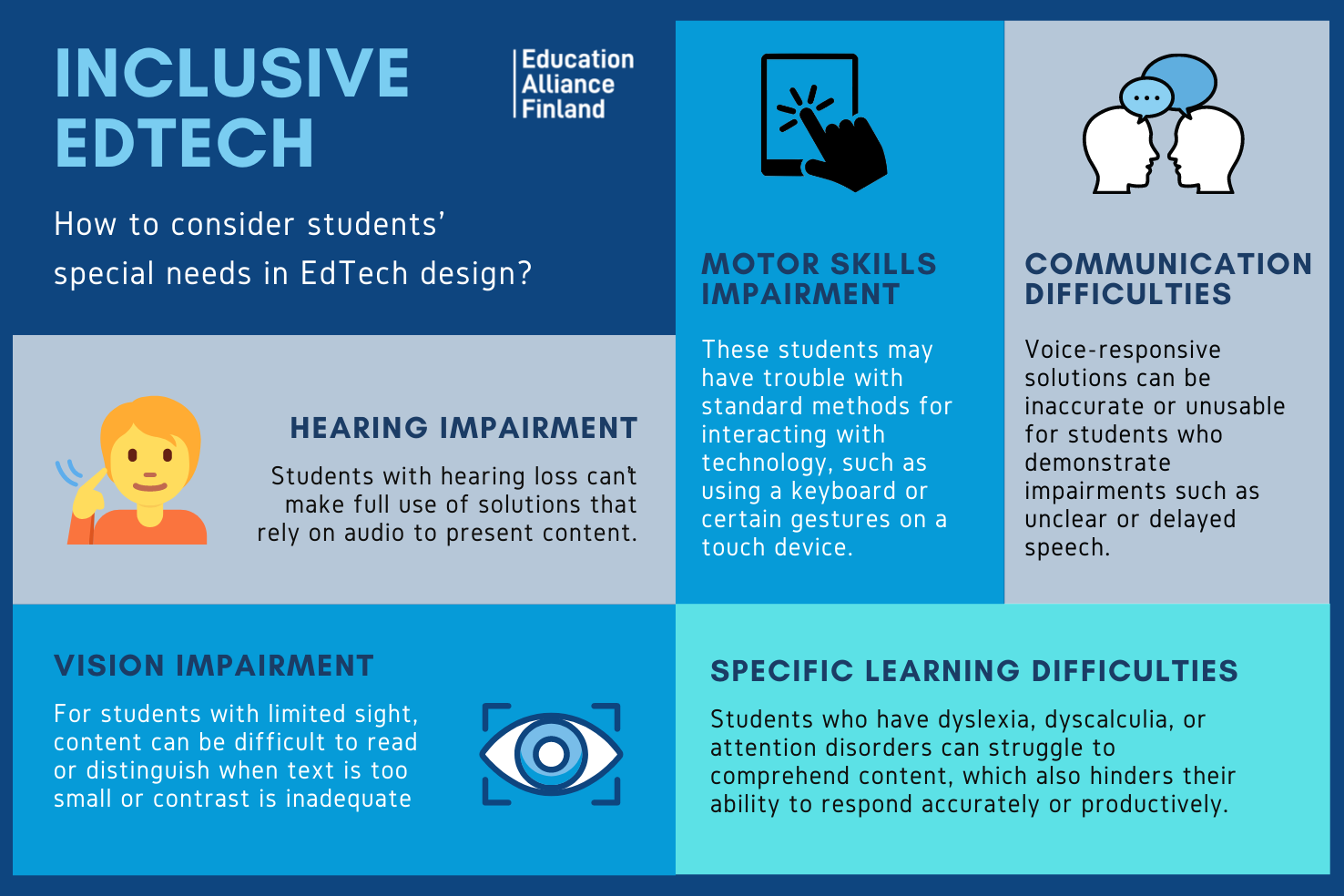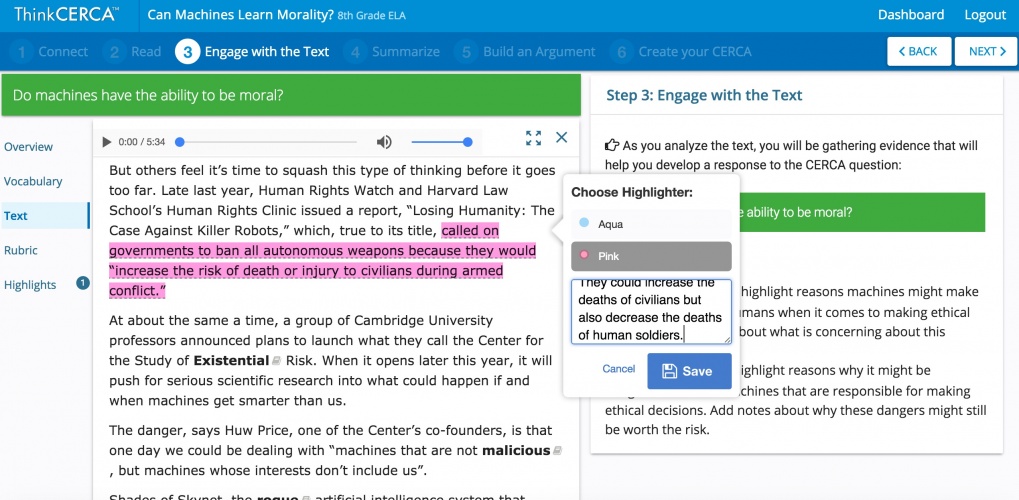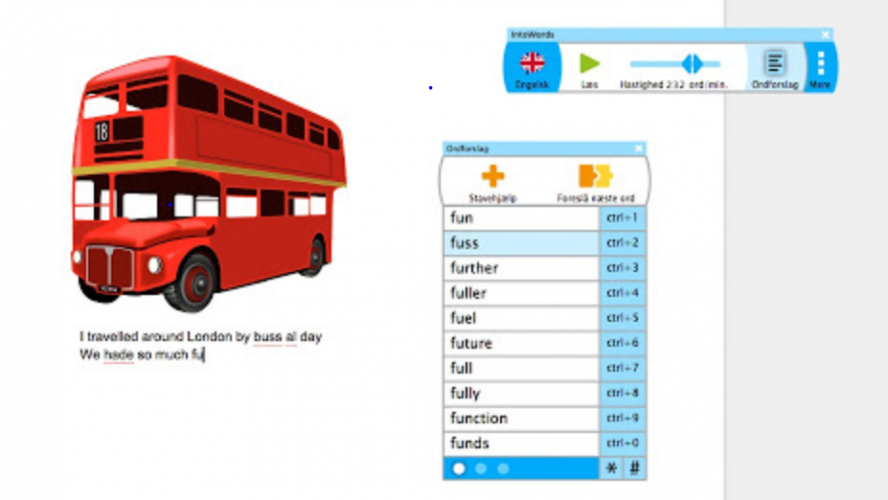Inclusive EdTech for the Classroom
January 31, 2019

The options for educational technology products are more plentiful than ever before, and it’s all too easy to get lost in the sea of choices. When selecting something for the classroom, it may be tempting to go straight for the best-reviewed apps or those that take advantage of the latest technology, but don’t forget to ask yourself a critical question: do the solutions enable all of your students, including those with special educational needs and difficulties, to participate in learning activities equally?
This is especially important to consider when students of differing capabilities are together in the same environment; if certain students have limited accessibility or cannot experience learning content to the same extent as their peers, there is a risk that they will be excluded and their educational opportunities will become limited. Therefore, solutions should always be chosen with inclusivity in mind. Here, we will go over what inclusive design means in the context of EdTech, and things to think about when it comes to choosing suitable products for your learners.
Identifying the Needs of Learners
Special learning needs come in many forms, and each need to be addressed in their own way. Finding and designing suitable solutions begins with understanding the needs of students, as well as the challenges that they may encounter when using EdTech. Common types that may be encountered include:
Vision Impairment: for students with limited sight, content can be difficult to read or distinguish when text is too small or contrast is inadequate
Hearing Impairment: students with hearing loss can’t make full use of solutions that rely on audio to present content.
Coordination/Motor Skills Impairment: these students may have trouble with standard methods for interacting with technology, such as using a keyboard or certain gestures on a touch device.
Communication Difficulties: voice-responsive solutions can be inaccurate or unusable for students who demonstrate impairments such as unclear or delayed speech.
Specific Learning Difficulties: students who have dyslexia, dyscalculia, or attention disorders can struggle to comprehend or make sense of content, which also hinders their ability to respond accurately or productively.
What is Inclusive Design in EdTech?
Inclusivity in EdTech can be thought of in two general ways; on one hand there are solutions that are designed to be used by all students, but include features to ensure accessibility by students with special educational needs. On the other hand are dedicated tools made specifically for students who would experience difficulty participating in a general education environment otherwise.
An example from the first category can be found in ThinkCERCA, a product aimed at helping students to build and exercise critical thinking skills in reading and writing. ThinkCERCA accomplishes this by using methods such as close reading and structured organizers for writing, but it is also cognizant that certain learners may need something more. To address this, it includes many features that allow both teachers and students to create more personalized learning experiences; at their discretion, students can use audio guides to support reading, quickly access a list of key vocabulary, highlight significant text, and use sentence frames as a scaffold for writing.
Meanwhile, teachers can individually assign custom content, such as Spanish language materials for students who are still developing their English language skills, to ensure that all students are in a better position to succeed.

ThinkCERCA offers plenty of tools for easier understanding and analysis of texts.
For some, increased scaffolding or personalization alone may not be enough to meet their educational needs. Fortunately, there are EdTech solutions that provide further aid and enable such students to participate in a general education environment more fully.
One such example is IntoWords, a set of tools that supports students in reading and writing tasks. The product does not contain educational content, but instead facilitates access to the materials that students are already using in their classroom and at home. One key feature is a text-to-speech function that can convert both digital and printed text (via the camera on a mobile device) to computer-generated audio, giving sight-impaired students a means to access textbooks and websites independently, and without compromise.
Other features include multi-language translation support that helps students with content in a non-native language, a highlighting tool to aid in reading, and word prediction that provides support for writing.

How to Make Right Choices for Your Classroom as a Teacher?
So you’ve discovered an amazing web-based program that aids students in learning alegbra; it explains concepts in great detail, adapts exercises to suit the pace of individual students, and does it all in an engaging way. It seems great! However, you’ve found that one of your students struggles making sense of numbers and can’t seem to get anywhere with it. Does that mean it’s time to move on and look for something else?
Not quite yet! Don’t be too quick to discount a solution just because it doesn’t meet every requirement; you’ll rarely ever find one that does. Instead of hunting for the one “right” app that does everything, start with something that fits your curriculum and learning goals and think about how you can fill in any gaps. After all, there is nothing wrong with combining multiple solutions to make things work.
In the previous scenario, perhaps a helpful possible addition would be a series of videos that use visuals to aid explanations, or a calculator app that makes algebra a multi-sensory activity. You could even get outside of technology-based solutions entirely –don’t be afraid to get creative with your ideas! Whatever you choose, remember to keep your sights on an important goal of the modern classroom: that EdTech is used to help enable all your students, regardless of ability, to have comparable learning experiences.
Written by Steven Chea
Master of Science in Engineering (MSE), Field Of Study: Digital Learning Games
About Education Alliance Finland (EAF)
EdTech Certification is a service offered by Education Alliance Finland, a private organisation specializing in quality evaluations of learning solutions. The evaluation process is based on global quality standard, developed by Finnish university researchers. Edtech industry stakeholders around the world trust Education Alliance Finland to ensure solutions are independently certified to a high-level quality standards.
